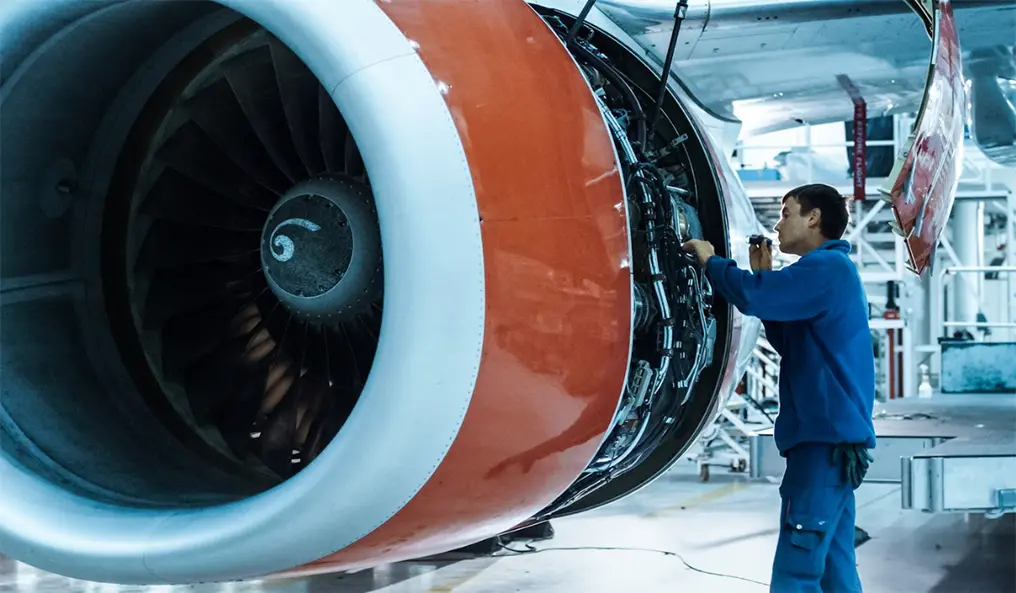
Aircraft Engineering
Overview
Aircraft engineering is the field of designing, developing, maintaining, and repairing aircraft and their elements. The engineers use a mix of scientific and mathematical principles to address flight problems and improve aircraft design. You will gain expertise in structural design, hydraulics, navigation, engine power, communications, maintenance, electrical systems, instrumentation, and more.
Objectives
- Gain expertise in aerodynamics, fluid dynamics, analysis, and more.
- Ensuring the safety of passengers.
- Maximum cost-efficiency.
- Analyse aircraft operations to identify areas for improvement.
- Enhance practical skills through Hands-On Experience
Prerequisites
- Design skills and knowledge
- Mathematics, Physics, and Chemistry Proficiency
- Basic Electronics and Computer Skills
- Engineering Entrance Exams (tentative)
Curriculum Outline
- Introduction to Aerospace Engineering
- Mathematics for Engineers
- Physics for Engineering
- Introduction to Materials Science
- Engineering Mechanics
- Computer-Aided Design (CAD)
- Aerodynamics
- Aircraft Structures and Materials
- Thermodynamics and Propulsion
- Flight Mechanics and Stability
- Electrical and Avionics Systems
- Programming and Data Analysis
- Advanced Aerodynamics and Computational Fluid Dynamics
- Aircraft Design and Performance
- Control Systems in Aircraft
- Aircraft Manufacturing and Production
- Structural Analysis and Finite Element Analysis (FEA)
- Project Management and Professional Skills
- Propulsion Systems Design and Analysis
- Aircraft Maintenance and Repair
- Aerospace Materials and Composite Structures
- Flight Testing and Instrumentation
- Unmanned Aerial Vehicles (UAVs) and Autonomous Systems
Teaching Method
- Lectures
- Group learning
- Practical activities
- Online learning
- Tutorials
Modules
- Aviation Business Enterprise
- Engineering Materials and Electrical Systems
- Engineering Mathematics
- Engineering Structures and Engineering Dynamics
- Project Management Aerofluid Mechanics
- Principles of Air Navigation and Meteorology for Aviation
- Engineering Mathematics (Year Two)
- Safety Assessment in Aviation and Human Factors and Crew Resource Management
- Flight Systems
- Route Planning and Navigation Systems
- Aircraft Structures
- Aerodynamics
- Final Year Project
- Industrial Management and Project Preparation
- Avionics
- Aircraft Systems Design
Assessment Methods
- Lab exercises
- Examinations
- Reports
Course Duration
It typically takes four years if you study full-time. Some universities offer part-time degrees, which can take around five to six years.
Facilities
- Gaseous oxygen and propane bi-propellant engine
- Nitrous oxide and PMMA hybrid engine
- Aerospace and Avionics Labs
- Materials and Structures Testing Labs
- Computer Labs with Engineering Software
- Propulsion and Engine Testing Labs
- Aircraft Hangars and Maintenance Workshops
Career Pathways
- Aerospace Engineer
- Avionics Engineer
- Flight Test Engineer
- Aircraft Maintenance Engineer
- Propulsion Engineer
- Structural Engineer
- Aircraft Design Engineer
- Aerospace Project Manager
Fees and Fundings
The tuition fees may vary depending on the university, country, and whether you are an international student or a local student. For the UK, the fee range for an international student is between £16,000 and £20,000 a year.
Entry Requirements
- High School Diploma or Equivalent
- International Baccalaureate (IB)
- Personal Statement
- English Language Proficiency
- Portfolio or Project Work (tentative)
- SAT/ACT scores
Field Work and Internships
- Aircraft Maintenance Internships
- Aerospace Manufacturing Internships
- Avionics and Electronics Fieldwork
- Flight Test Engineering Internships
- Aerodynamics and Wind Tunnel Testing Fieldwork
- Propulsion and Engine Testing Internships
- Composite Materials and Structures Fieldwork
Certifications
- Aircraft Maintenance Engineer (AME) License
- Federal Aviation Administration (FAA) License
- Certified Aerospace Technician (CAT)
- Six Sigma
- Certified SolidWorks Associate (CSWA)
- CATIA Certification
- Nondestructive Testing (NDT) Certification
Intakes
The intake can vary by country and institution. In the UK, the primary intake is September, and the secondary intake is January, whereas in the USA, it is August and January consecutively.
Student Testimony
"After I enrolled in the Aircraft Engineering BEng(Hons) in 2009, my career started to change significantly. I was offered the post of CAMO engineer and later moved on as a production and planning engineer at Augsburg Airways GmbH in Munich (Member of Lufthansa Regional) and in 2013 I started a new position as a planning engineer at DC Aviation GmbH in Stuttgart, where I was taking care of the Daimler aircraft fleet among others." [Fei-sal Chatharoo from Kingston University]
Frequently asked questions
An aircraft engineer deals with everything related to the design, construction, maintenance, repair, and testing of the aircraft.

